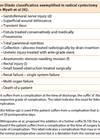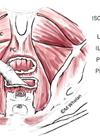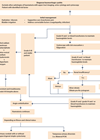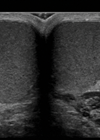Features
Use of Clavien-Dindo classification in urology part 1 – pelvic surgery
There is no widely accepted system to classify postoperative complications. It is necessary to compare the outcome and complications while validating a new surgical procedure or one of the surgical approaches of a particular condition. Several parameters have long been...
The role of specialist therapeutic radiographers in the treatment and care of men with prostate cancer
The Statement of Intent: Cancer Strategy for England: 2015-2020 indicates that the number of people diagnosed with cancer each year will continue to grow rapidly due to the ageing population. There is also a requirement to diagnose and offer patients...
Stereotactic body radiotherapy for oligometastatic disease secondary to urological cancer
The concept of oligometastatic disease is controversial. The traditional model of cancer, which most of us learnt at medical school, is of a disease which starts confined to an organ, for example the prostate, where it can be cured with...
The emerging role of physician associates in urology
The physician associate (PA) is a new role in the NHS which has expanded across medical and surgical specialties to include urology. In the USA, it has long been an established field of practice where physician assistants work autonomously within...
Physiotherapy first for pelvic floor dysfunction
Physiotherapy should be included in first-line management options for pelvic organ prolapse and urinary incontinence in women [1,2]. Additionally, referral to physiotherapy is widely practised for the management of urinary incontinence in men, faecal incontinence, defecation disorders and various pelvic...
An algorithm for the management of haemorrhagic cystitis
Haemorrhagic cystitis (HC) can be one of the most difficult conditions to treat in urological practice. It is characterised by intractable bleeding from the bladder and may be acute or chronic. The most frequently reported causal factors are radiotherapy (RT)...
Reflections on 20 years as an Army Reserve doctor: live a life less ordinary
It seems a very short time ago that my predecessor recruited me into my regiment as a surgical senior house officer during a varicose vein operation in a cottage hospital in Stroud, informing me that I would be only the...
Prostate cancer survivorship: a new path for uro-oncology
Over two million people in England have a diagnosis of cancer [1]. Of this figure, over 250,000 have been diagnosed with prostate cancer [2]. However, during the next decade, a rapid increase in the number of new cancer diagnoses, as...
Guide to gaining approval for a clinical study
This article focuses on gaining approval for clinical research involving NHS patients, although the principles can be applied to other types of research. It can be quite a daunting process for the uninitiated applicant. Often it can be made less...
Bladder cancer – an overshadowed ‘volcano’
Bladder cancer has often been overshadowed by the limelight of prostate cancer. However, of all the urological cancers, bladder cancer is the only one which has shown a slight decline in age-standardised five-year survival rates over the last couple of...
What to expect when meeting a statistician
There are a growing number of statisticians working closely with medics from all specialties. They have different training but they are driven by the same goal: to perform high quality evidence-based clinical research [1,2]. In a perfect world we would...
Testicular microlithiasis
Introduction Testicular microlithiasis (TML) was originally described in 1970 in a healthy four-year-old boy [1] and the first paper regarding microlithiasis as an entity seen on ultrasound was published in 1987 [2]. Testicular microlithiasis is seen on ultrasound as small,...














